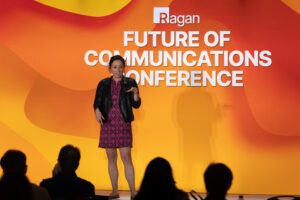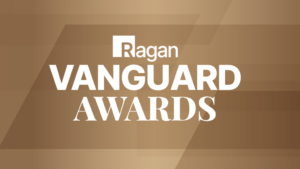Build upon your company’s purpose, transparently and ethically
23andMe’s Andy Kill shares his advice to communicators working in a regulated industry.

Managing the communications of a consumer-facing company in a highly regulated space comes with challenges, some ethical and many, many procedural. To the genetic testing company 23andMe’s Director of Communications, Andy Kill, working alongside the regulatory teams and legal teams is just part of what he does every day.
“A portion of the product is regulated by the FDA, some of the reports are governed by the FDA, and then there’s other information in the product that falls outside of the FDA’s scope, like the ancestry side of things,” he explained. “We have a drug discovery business as well, which is highly regulated.”
The company was founded in 2006 and provided easy access to genetic testing, which at the time forged new ground for both the FDA and 23andMe and resulted in frequent communications between the FDA and the organization — some which made the news.
“A lot of it is working closely with our regulatory and legal teams and knowing what’s in bounds, what’s out of bounds, and how we can creatively use PR and comms within the confines of that to story tell,” said Kill.
Ahead of his session at PR Daily’s Public Affairs & Speechwriting virtual conference, Kill shares how he stays true to 23andMe’s mission, the storytelling tricks he uses to get coverage in the press, and why his organization leads with science.
Identify and build upon your organization’s purpose
Having a strong mission statement can be a guiding star for companies looking to connect with external audiences.
“The mission of the company is to help people access, understand and benefit from the human genome,” said Kill. “From a communications perspective, [we look at] what we are prioritizing and if it backs up to helping people.”
23andMe stays true to their purpose in several ways; for example, their tests provide information to consumers that helps them identify health risks. The company also builds on their mission statement with work on their FDA-regulated drug discovery business.
“We’re able to find new drug targets based on human genetic information, and potentially develop new medicines that can help people,” said Kill. “That’s the ultimate fulfillment of that mission.”
Not only does a clear mission statement help an organization stand apart in a crowded market, but it also helps the communications team focus on what’s important. “All of our communications ladder up to that mission,” Kill added.
Human stories resonate with customers
When it comes to sharing 23andMe’s mission externally, Kill looks holistically across the company for inspiration. “People find[ing] family and meeting for the first time [are] great visuals for broadcast,” he said. “[Those] customer stories tend to resonate.”
Another area of focus is the research group. “We have over 13 million customers at 23andMe and about 80% volunteered to participate in research,” said Kill. “They’re answering survey questions, and looking at those alongside aggregate anonymized genetic data, we pull out different trends in terms of specific health conditions or genetic risks.”
Any genetic information that is shared by 23andMe meets the most stringent guidelines — a requirement of its regulated nature. “All of that [data] has to be aggregate information. It can’t be any individual level information. It has to be deidentified and it can only come from customers who have elected to participate in research,” said Kill. “[There are] ethical guardrails in place.”
But all that work is worth it when that pitch lands. “Whenever we do studies on common conditions those resonate really well,” said Kill.
Be as transparent as ethically possible
“The strategy is ‘Lead with Science,’” said Kill. That mantra has helped guide 23andMe to success. “The company’s been focused on publishing consistently, not just research, but also publishing on the accuracy of the product through our different FDA authorizations.”
Kill suggests leaning into transparency wherever possible and keeping open lines of communication within the company as well as externally. One of the departments he speaks with: the ethics team.
“We have an in-house research ethics team that we can consult with anytime,” said Kill. While guardrails exist to protect consumer data, having the ethics team on-hand to discuss a potential research story can be handy. For example, during the early days of COVID-19, the team was developing data around the loss of smell and taste phenomena.
Of course, there are still some pieces of misinformation Kill’s team continues to battle against. “It’s often reported that we’re a part of investigations [using] genetics to crack cold cases,” said Kill. That’s false. “23andMe doesn’t participate in law enforcement investigations.”
Join Kill at PR Daily’s Public Affairs & Speechwriting virtual conference on April 4. Kill will speak alongside speechwriters and communications leaders from the U.S. Navy, Edelman, IBM, the U.S. Department of Labor, and more.
COMMENT
PR Daily News Feed
Tags: Ragan Conference







